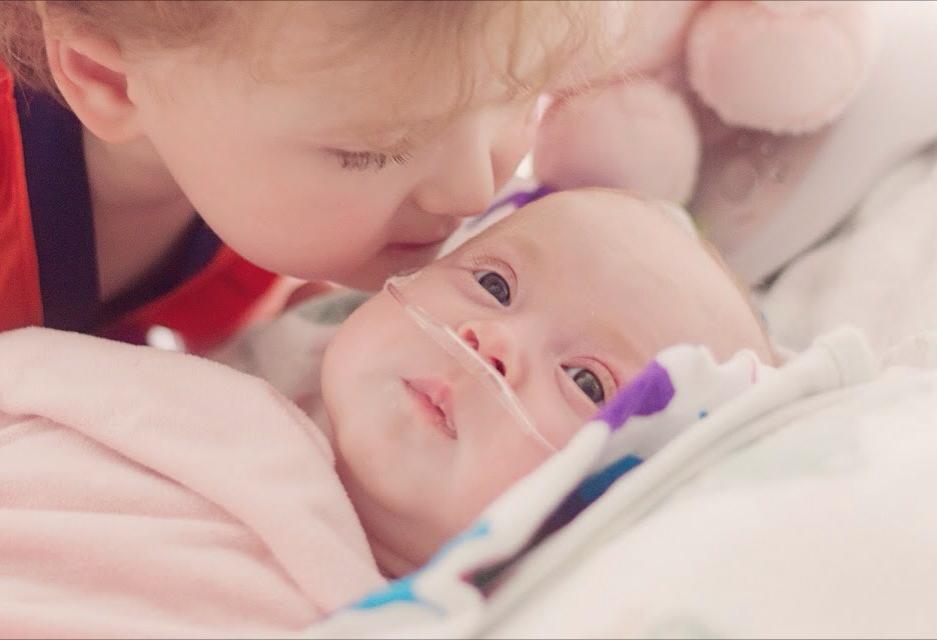Willow Rae Porter isn’t your average child. When she was still invisible to the world, safely tucked in her mother’s womb, this miracle child saved her mother’s life. Now the situation has reversed, with her mother Katie Hanson fighting every day to save Willow’s life.
It was during a routine pregnancy check-up that doctors first discovered Hanson had cervical cancer. Doctors advised her to abort the baby in order to undergo a biopsy and treatment. Hanson, however, knew there had to be another option. Baby Willow was developing normally and Hanson knew that cervical cancer brought risks of infertility. In fact, abortion does as well.
“At that point, it was recommended to me by the doctor that due to the fact that I was pregnant that they’d be unable to take a biopsy to see how far progressed the cancer was or how far it had spread,” she told Live Action News. “I was advised to terminate since the pregnancy was still early on, do a biopsy, and seek treatment. I said ‘no’. I was monitored the whole pregnancy. Cervical cancer doesn’t pose a risk to the baby. ”
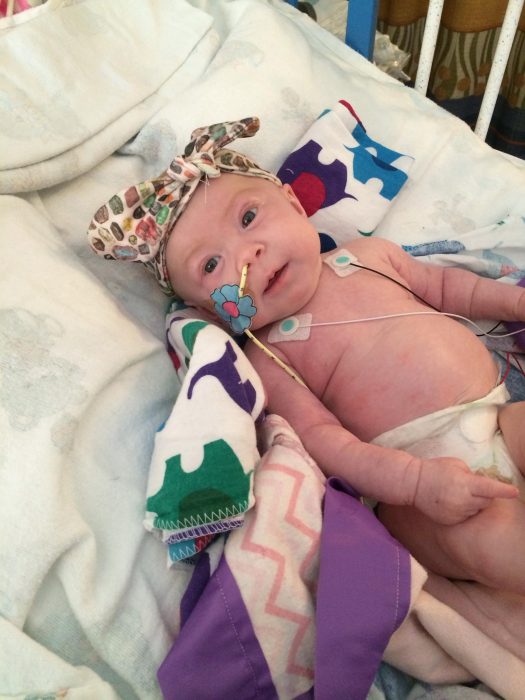
Courtesy of Kate Hanson.
Hanson’s pregnancy progressed normally and Willow was born one month early but completely healthy. She spent one day at the hospital and was able to go home. Three months later on January 17, 2016, Hanson underwent surgery to have three inches of her cervix removed and it was successful. She did not require chemo or radiation and is taking steps to ensure that the cancer doesn’t return. She received a biopsy every six months following surgery and will receive a biopsy every year for four more years. In January, she will be cancer free for two years.
But the day after Hanson’s cancer was removed, three-month-old Willow was in the hospital. She had been dealing with some health issues but the pediatrician had failed to act.
“My mindset went from ‘take it easy’ to ‘heal’ to ‘okay my baby’s in the hospital and we have no idea what’s going on and I need to be her greatest advocate’. My full focus instantly switched to Willow,” she explained.
Willow’s first few weeks outside of the womb were normal. She is Hanson’s second child and nothing seemed out of the ordinary. Then, Willow began snoring at night. When Hanson asked the pediatrician about it she was simply told that some babies snore.
“[The doctor] told me, ‘If Willow’s snoring bugs me so much and was preventing me from sleeping I should put her in her own room,'” said Hanson.
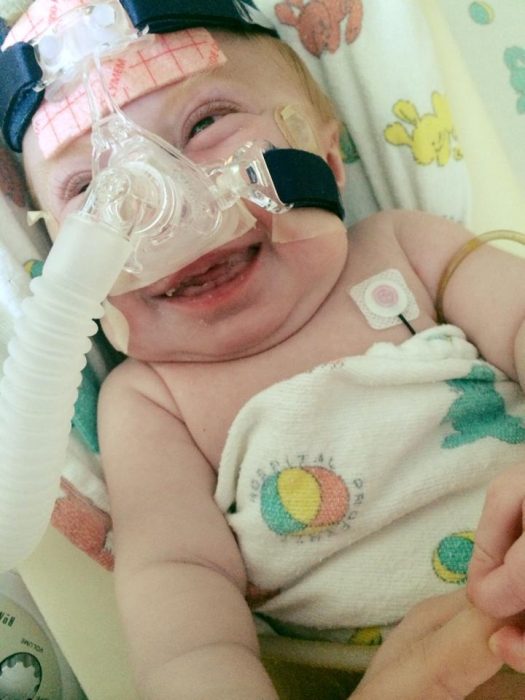
Courtesy of Kate Hanson.
Soon, Willow began making snoring noises even when she was awake. Worried about her daughter, Hanson again asked the pediatrician about it. She was told not to worry about it. Hanson pushed on, asking for a referral to an ENT doctor. The pediatrician refused. Then Willow stopped eating, she would pull away and scream. The pediatrician told Hanson that she must not be latching correctly, which seemed like an odd diagnosis since Willow had been nursing normally for months. The lactation consultant the pediatrician referred Hanson too agreed. Willow had no problems latching. The lactation consultant told Hanson to have her tested for RSV and whooping cough, but the pediatrician refused that request as well.
Hanson told the doctor that she would not leave the office until the tests were run on her daughter. She stood her ground until the pediatrician gave her two options: take Willow home and put her on an acid reflux medication or go across the street to the hospital.
“I went and had her admitted to the PICU and that’s where it started to snowball,” said Hanson. “Feeding her wasn’t working and they did a swallow study under x-ray. That’s when we learned she stopped eating because she was severely aspirating fluid while she was trying to swallow. She couldn’t suck, swallow, and breathe at the same time. We were told it was very likely that Willow had suffered a stroke at some point that we didn’t know about and that could cause the aspirating and snoring. And she couldn’t maintain her airway while sleeping.”
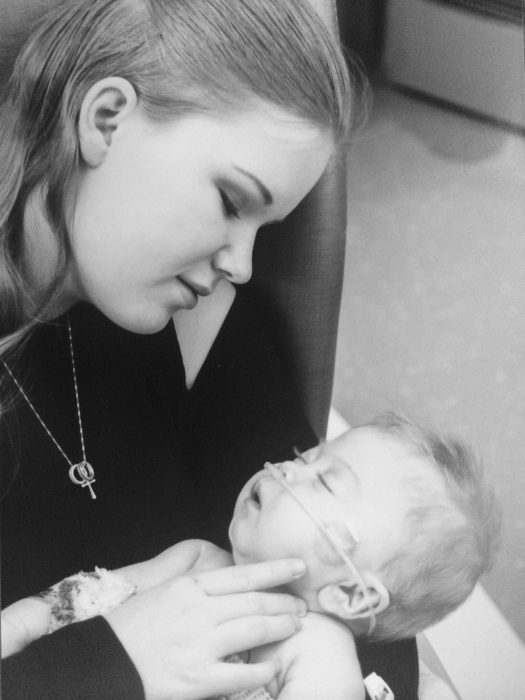
Courtesy of Kate Hanson.
Willow was given an NG feeding tube and an MRI was done on her brain which came back normal. Doctors couldn’t find anything wrong so they began to look more extensively at Willow. An ENT discovered that she lacked the rigid cartilage in her airway that would stabilize it, but that can be common in people under six months of age. Her blood pressure was consistently “through the roof” and her heart rate well into the 200s.
“Her pediatrician had chocked it up to her being upset during blood pressure tests,” said Hanson. “Doctors at the hospital did an echo and an EKG. That’s when we learned she has dilated cardiomyopathy of the left ventricle. The ventricle is very enlarged in comparison to the right side. For every beat on the right, her left side was beating two to three times because it didn’t have the ability to pump as strongly as needed. It’s not a surgical fix. It’s only fixable with a complete heart transplant. It can be managed with medication and sometimes people can outgrow it, or it continues to progress and sends her into heart failure. You can try different meds and hope and we can hope for a donor heart right when we need it.”
Doctors then began running genetic tests which all were coming back normal. In the meantime, Willow’s health continued to decline. Hanson asked to be transferred from the hospital in Montana to Seattle Children’s because Montana lacked the pediatric specialists she knew her daughter needed. Upon arrival in Seattle, Willow’s breathing immediately improved because they were at sea level, and she no longer needed the oxygen she had been on. Doctors slowed down the changes made to her feeding tube rate and Willow’s vomiting stopped. She began to do better and in April she was discharged to return to Montana.
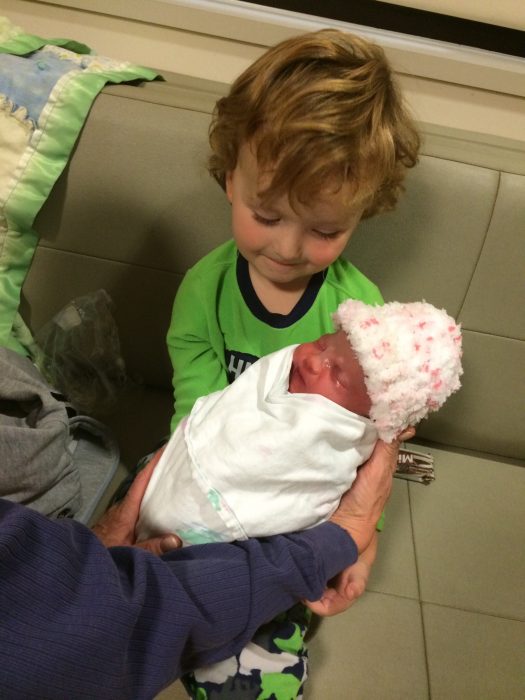
Courtesy of Kate Hanson.
“Before she was discharged she was given her vaccines because no one had wanted to give them to her in Montana,” said Hanson. “We chose to stay one night in the Ronald McDonald House so that we could make sure she was okay before we left. That night the monitors went off and all of a sudden her oxygen rate dropped to the 60s. We couldn’t get it back up and we ran over to the ER. They readmitted her and did another scope and the airway looked worse. They decided the airway wasn’t getting better and there was the chance she could need life-saving surgery to remove extra tissue and cause scarring in order to give it structure.”
The surgery was done and was supposed to be easy, but it wasn’t. As soon as Willow was given anesthesia she stopped breathing and became unresponsive. After a frightening effort to try and save her doctors finally had her stabilized but were unable to complete all of the surgery. She remained in the hospital for another month to recover and then flew back to Montana. She continued to do well until she was given another round of vaccines. Within four days her oxygen plummeted and her loud breathing and vomiting began again. For ten days Hanson called doctors in Montana asking for a chest x-ray that they continued to deny.
“On the tenth day of vomiting, we woke up to her monitors going off. Her heart rate was at 220 and she had a 103-degree temperature. We rushed to the ER where they said she probably had the flu. We had to fight for an x-ray. She had very severe aspirational pneumonia because no one listened that she was aspirating while vomiting. Now it was too late. She was in critical condition because of it.”
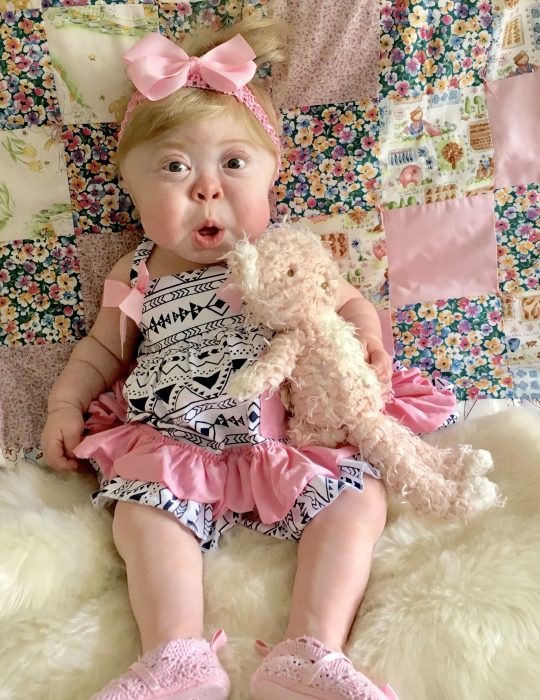
Courtesy of Kate Hanson.
Hanson requested a transfer to Seattle but doctors said Willow was too unstable. So Hanson called Seattle herself and the staff there demanded that Willow be transferred. In the middle of the night, Willow was life flighted to Seattle. There, she was given a 50/50 chance of making it through intubation, but she did. She had pneumonia, RSV, and rhinovirus, and it was a complete miracle that she pulled through.
“They ran every test they could think of and all came back normal. At that point, we were told that the only thing left to do is a full genome sequence to decode her whole DNA and that would tell us anything that is wrong with her and could go wrong with her in the future.”
Told it could take six months to a year to get the results back, they had answers about Willow in just two weeks. She was diagnosed with a metabolic gene disorder called Mucolipidosis II commonly known as I-cell, a progressively debilitating disorder affecting much of the body. Most individuals do not survive beyond childhood. Symptoms include weak muscle tone, slow growth with many stopping to grow around age two, delayed speech and motor skills such as sitting and standing, and bone abnormalities.
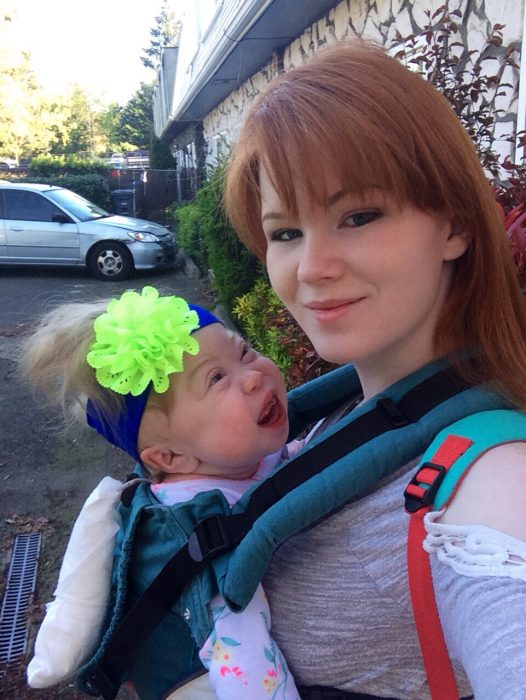
Courtesy of Kate Hanson.
For Willow, the options were limited. While in some cases, the body doesn’t make the enzymes it needs, for Willow, the enzymes were created but weren’t being told where to go in the body. Waste products build up in her body and what they would normally use to treat the condition wouldn’t work with her. Bone marrow transplants in children with similar cases to Willow’s had ended up either not making a difference or killing them. The predicted life span is age three to five years.
“Basically we got hit in the face with every parent’s worst nightmare,” said Hanson. “Literally all the issues in her body are caused by this one thing that could happen to anyone and we did not have any way of knowing about it. Several mutations can cause it and you’d have to know exactly which one to find it. The only testing is for parents who have already experienced it and both parents have to be recessive carriers.”
None of Willow’s doctors had known that I-cell even existed – that’s how rare it is. It’s the first case they had seen at Seattle Children’s. Willow was now nine months old and the family had to choose whether to stay in Seattle near the doctors or move back to Montana near family. Willow needs so many specialists that they decided to stay in Seattle.
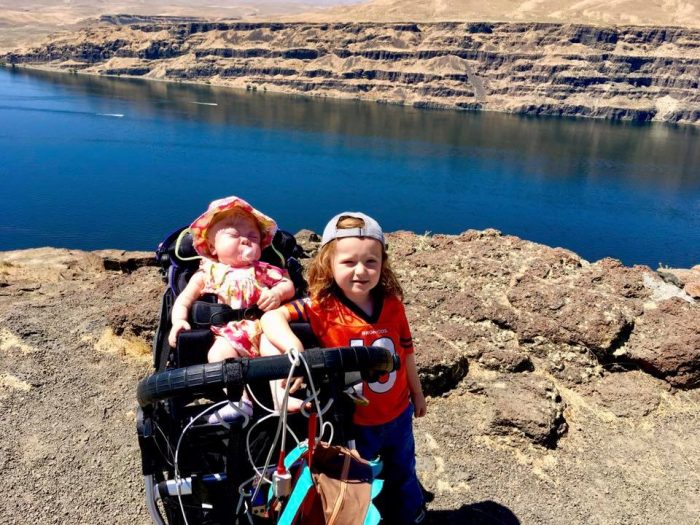
Courtesy of Kate Hanson.
Willow will turn two in November and her mother said she is a very happy girl despite all that she goes through.
“Even when she was struggling she didn’t put up a fuss about it and that’s still how she is today,” she said. “She is the happiest little girl ever. She has taught us all how we should already be living life every single day. We could get hung up and get upset and mad at doctors, at God, at the world, at all of these things that we have no way of changing. We could get so caught up and we would miss what we have right in front of us which is this happy little girl who has love for each new day greater that that of an able-bodied person. We love her for exactly who she is and we make the most memories each day that we possibly can and we don’t worry about what the future holds.”
Willow is currently doing better and doesn’t need oxygen during the day but at night is on BiPAP. Alarms wake Hanson through the night and she never knows if Willow will wake up in the morning, but she has normal function of her heart now thanks to medications. Willow is on a daily dose of steroids to keep inflammation out of her lungs as well as heart medications three times daily. Hanson checks Willow’s vitals several times a day and needs to do airway clearance on her lungs. While she would benefit from an in-home nurse, they have not been approved for one because there aren’t enough to go around. Until they do have a nurse, Hanson is unable to work and the family struggles to get by on Willow’s disability checks. Despite the challenges they face, Hanson and her children are trying to enjoy life.
“We don’t know if she will wake up every morning, so it’s a blessing every morning that she does wake up,” she said. “She is closing in on the age when most kids lose their battle. It’s a daily reminder and we make the choice not to focus on that. God really blessed me with Willow. We have been fighting for each other right from the beginning. She gave me a reason to fight through cancer. She saved my life and now I get to advocate for her.”

